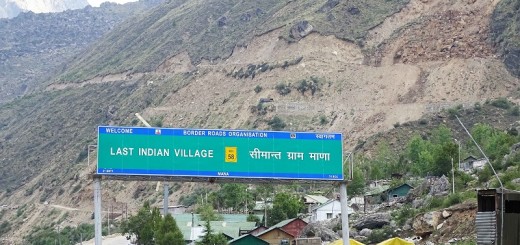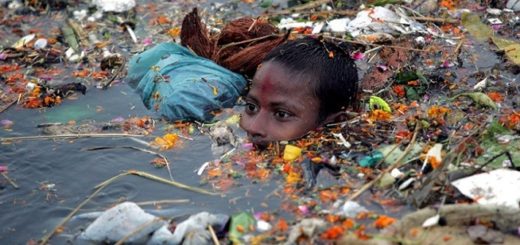History of Kumbh Mela : The Largest Human Gathering on Earth
Kumbh Mela is an auspicious Hindu mass pilgrimage that occurs every 12 years in India. During Kumbh Mela, devotees bathe in the water of sacred rivers of India to wash away their sins to get rid of the continuous cycle of birth and death and attain Moksha. The Kumbh Mela occurs after 12 years at four ancient and holy cities in India namely Allahabad, Haridwar, Nasik, and Ujjain. It is the world’s largest peaceful gathering of humans and almost 100 million people participated in Kumbh Mela of 2013. The occasion continues for one and a half months but a few days are very auspicious and important like Mauni Amavasya.
In 2013 on the day of Mauni Amavasya (10th February) around 30 million people gathered and took bath in the holy water of River Ganges thereby making it the largest gathering of Human on a single day as well as largest peaceful gathering on the entire planet. It is referred by various names outside India as “the world’s most massive act of faith” and “world’s largest congregation of religious pilgrims”. In this article, we would discuss History of Kumbh Mela, how the pilgrimage got name Kumbh Mela, which cities and rivers of India hosts Kumbh Mela and its Importance in Hinduism.
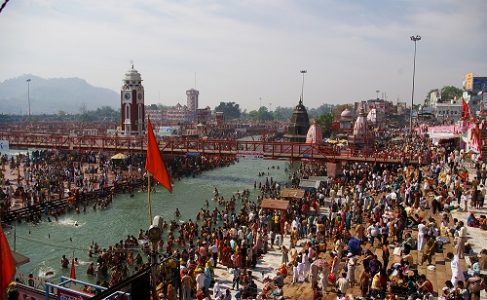
Qucik Navigate:
Meaning of Kumbh Mela
The name Kumbh Mela is derived from two Hindi words Kumbh meaning pitcher and Mela meaning fair. According to Hindu mythology, it is believed during the fight between Gods and Devil for ownership of Amrit (Nectar of Immorality) which appeared from churning Ksheera Sagara or (the ocean of milk) four drops from pitcher fell on earth at four different places which were the cities of Allahabad, Hardwar, Nasik, and Ujjain. So devotees from different part of India and world gathers to take a dip in the holy water of these rivers and wash away their sins. Also, as per Hindu mythology, it is believed those took baths during this auspicious time get rid of the continuous cycle of rebirth and attains “Moksha” or “Enlightenment”. The cities and river that host Kumbh Mela is as follow:
The Places Where Kumbh Mela Is Organised In India
- Allahabad: River Ganges (On the confluence of River Ganges, Yamuna, and Mythical Saraswati)
- Haridwar: On banks of River Ganges.
- Nasik: On banks of River Godavari.
- Ujjain: On banks of River Shipra.
At all these places Kumbh Mela occurs after 12 years i.e after every three years starting from Allahabad to Nasik then Ujjin and finally Haridwar. There is also Ardha Kumbh Mela (Ardha means half) which is held at Haridwar and Allahabad after every six years. Kumbh Mela at Allahabad is also known as Purna Kumbh Mela (Purna means full). Kumbh Mela occurring after 144 years is termed as Maha Kumbh Mela (Maha means great). There is also provision for Magh Mela which is held annually only in the city of Allahabad excluding the year of Kumbh.
Also Read: Amazing and Interesting Facts About Hinduism
History of Kumbh Mela
The exact origin or history of Kumbh Mela is hard to trace but Hindu religious books i.e. Ramayan and Mahabharat mention the episode of “Samudra Manthan”. According to Hindu mythology when Gods became very weak due to the curse of sage Durvasa they went to Lord Vishnu to seek his help. Lord Vishnu suggested performing Samudra Manthan and when Amrit would come out from this process, Gods can drink the Amrit to gain superpower. As soon as Amrit came out, a fight started between gods and devils which continued for 12 days and 12 nights which was equivalent to 12 years of Human life. Lord Vishnu took the pot containing Amrit and flew away and during this process, four drops fell on earth which led the beginning of Kumbh Mela.
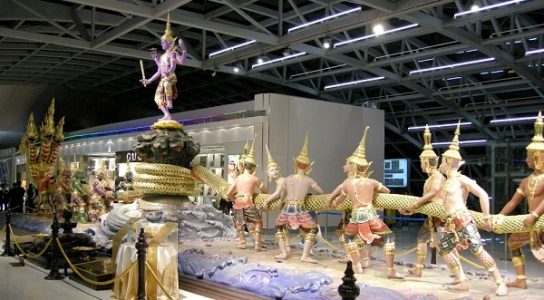
History of Kumbh Mela can also be traced from historical texts which mention that King Harshavardhana who ruled in India from (590–647) B.C started the festival of Kumbh Mela. During his reign, Chines traveler “Hsuan Tsang” visited India and described the popular culture of bathing in holy water. Hsuan Tsang wrote, “About half a million people gathered along the banks of river Ganges during the month of Magha (January- February) and the celebration went for about 75 days”. Indian saint Shankaracharya popularized the festival among the common people and since then the number of devotees participating in Kumbh Mela here increased.
Mark Twain visited the Kumbh Mela in 1895 and wrote:
“It is wonderful, the power of a faith like that, that can make multitudes upon multitudes of the old and weak and the young and frail enter without hesitation or complaint upon such incredible journeys and endure the resultant miseries without repining. It is done in love, or it is done in fear; I do not know which it is. No matter what the impulse is, the act born of it is beyond imagination, marvelous to our kind of people, the cold whites.”
Rituals and Attendance Performed in Kumbh Mela
The most important and common ritual of Kumbh Mela includes the holy bath. Throughout the history of Kumbh Mela bathing in holy water has remained the major activity. Sadhus (Holy Men) and pilgrims can be seen taking bath together and praying to god. As Kumbh Mela is considered sacred of all pilgrims in Hinduism it has a special place in Hindu culture. Other important activities include singing Bhajans (Holy song), discussions on religion, practices, and way of life, mass feeding of poor and pilgrims who came to attend this ceremony. There is a fixed order in which the bathing ritual is performed with sadhus leading the possession followed by other visitors. The Kumbh Mela is also famous for Naga Sadhus (Naked Saints) and they don’t wear a single cloth in their life not even in harsh winter while they meditate in the Himalayas! Naga sadhu is a symbol of leaving all the earthly attachment and to be part of God.
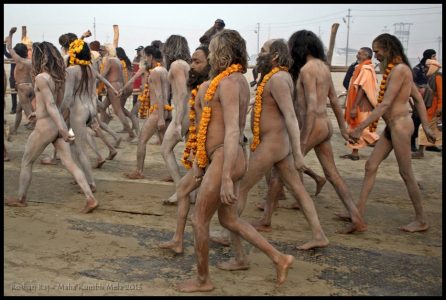
Throughout the history of Kumbh Mela number of people visiting Kumbh Mela has increased and in the last hundred years, it has been increased rapidly due to which special arrangements have to be made to accommodate all the pilgrims. Around four million people gathered in Kumbh Mela held in 1903 which increased to 15 million in 1977, 29 million in 1989 and 40 million or more in 2001. Nearly 70 million people gathered in Ardha Kumbh Mela of 2007 in Allahabad. Kumbh Mela of 2013 at Prayag (Allahabad) attracted an estimated 100 million people in 55 days run with 40 million people bathing on the busiest day of Mela making it “Largest gathering of human on the planet”. Due to such a massive crowd many times it becomes difficult to manage the crowd which leads to fatal accidents. Many Mela gathering is known for stumpage and death.
The occurrence of Kumbh Mela
The dates and months are calculated on the basis of the position of Moon, Earth, and Sun.
- Allahabad: When Sun is in Capricorn (Makar Rashi) and Jupiter in Taurus (Vrishabha Rashi ) Kumbh Mela is celebrated at Allahabad (also known as Prayag).
- Ujjain: When both Sun and Jupiter are in Scorpio (Vrishchik Rashi) Mela is celebrated at Ujjain.
- Hardwar: For Mela to take place in the Haridwar sun should be in Aquarius (Kumbh Rashi).
- Nasik: At Nasik, Mela is celebrated when Jupiter and the sun are in the zodiac sign (Simha Rashi).
Also Read: What is the greatest thing About Being Hindu
The Next Kumbh Mela
Next Kumbh Mela is scheduled to take place in the year 2015 on the banks of River Godavari in Nasik in Maharashtra. It would be known by the name “Sihasth”. The state government has already started preparations to successfully conduct the Mela. Nasik Kumbh Mela is also known for attracting the highest pilgrims among all the four Melas. The entire area is considered as a separate district with its own police station, many hospitals, thousands of toilets, basic amenities centers. Indian Railways and state transport services also play a vital role during this time and additional trains and buses run to ensure not a single pilgrim is left from offering prayer.


